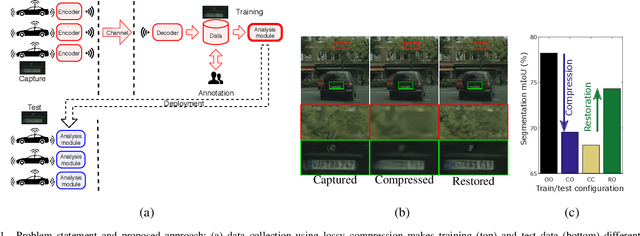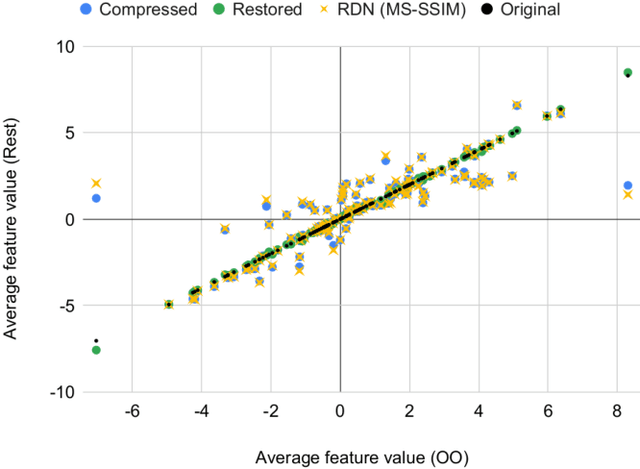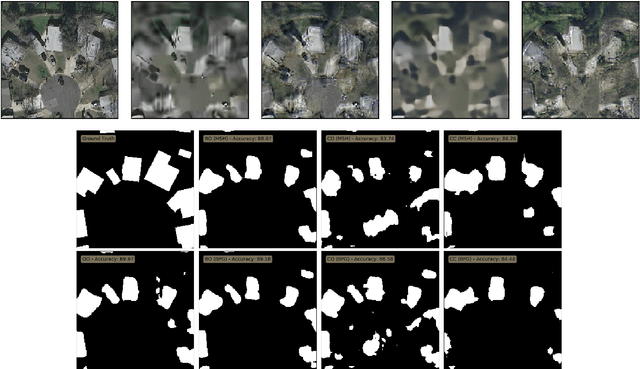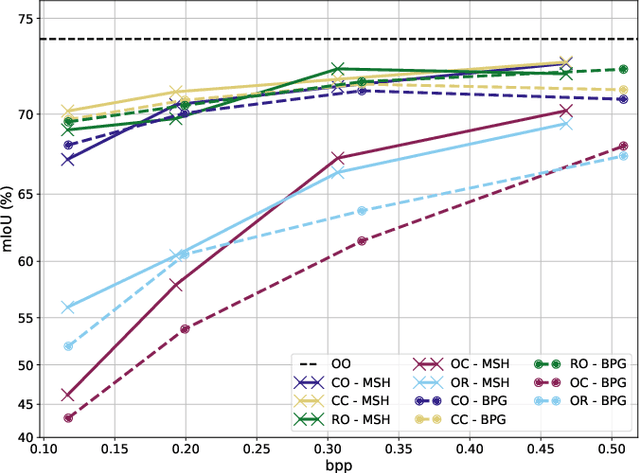Distributed Learning and Inference with Compressed Images
Paper and Code
Apr 22, 2020



Modern computer vision requires processing large amounts of data, both while training the model and/or during inference, once the model is deployed. Scenarios where images are captured and processed in physically separated locations are increasingly common (e.g. autonomous vehicles, cloud computing). In addition, many devices suffer from limited resources to store or transmit data (e.g. storage space, channel capacity). In these scenarios, lossy image compression plays a crucial role to effectively increase the number of images collected under such constraints. However, lossy compression entails some undesired degradation of the data that may harm the performance of the downstream analysis task at hand, since important semantic information may be lost in the process. Moreover, we may only have compressed images at training time but are able to use original images at inference time, or vice versa, and in such a case, the downstream model suffers from covariate shift. In this paper, we analyze this phenomenon, with a special focus on vision-based perception for autonomous driving as a paradigmatic scenario. We see that loss of semantic information and covariate shift do indeed exist, resulting in a drop in performance that depends on the compression rate. In order to address the problem, we propose dataset restoration, based on image restoration with generative adversarial networks (GANs). Our method is agnostic to both the particular image compression method and the downstream task; and has the advantage of not adding additional cost to the deployed models, which is particularly important in resource-limited devices. The presented experiments focus on semantic segmentation as a challenging use case, cover a broad range of compression rates and diverse datasets, and show how our method is able to significantly alleviate the negative effects of compression on the downstream visual task.
 Add to Chrome
Add to Chrome Add to Firefox
Add to Firefox Add to Edge
Add to Edge